Many marketers are familiar with SlideShare, the popular presentation platform with over 80 million users. SlideShare allows users to upload videos, documents, infographics, and presentations in various formats; e-books are particularly effective in this channel.
Using SlideShare for content marketing can increase brand awareness and drive traffic to your website. But how can marketers rely on SlideShare for lead-gen?
Integrate Lead Forms With a Marketing Automation Platform
SlideShare offers built-in lead forms as a paid feature, and users can integrate these forms directly with a marketing automation platform, such as Marketo. This feature is available to business accounts, allowing users to choose the "Collect Leads" option for each SlideShare they upload. (SlideShare has a great guide on paid options.)
Depending on your audience and offering, paying for leads on SlideShare might be worth it. However, in my experience, the lead quality can be highly variable, and I've found the paid options to be more expensive and less useful than other channels.
So, how can you use SlideShare for lead-gen while maintaining your budget and your lead quality standards?
Read on for real-world examples.
Pair an E-Book With Gated Complementary Content
Pairing complementary content with a SlideShare e-book is a great way to drive traffic to your site and improve lead quality. The key to complementary content is to pair thought leadership or theoretical concepts with practical and actionable tips and tools.
In the following examples, each publisher started with a high-level idea for an initial share, and offered downloadable tools to help readers execute on those ideas.
When Nancy Duarte released her "Slidedocs" e-book on SlideShare, she also released templates and diagrams, gated by a form on the Duarte website. "Slidedocs" explains the need for a new type of content that falls between presentation slides and documents, and it outlines best-practices for creating a slidedoc. The templates and diagrams give readers usable tools to create their own slidedoc, following the best-practices outlined on SlideShare.
Duarte received nearly 40,000 content downloads from the "Slidedocs" e-book, and she continues to make use of the complete book, templates, and diagrams in nurture content and workshops.

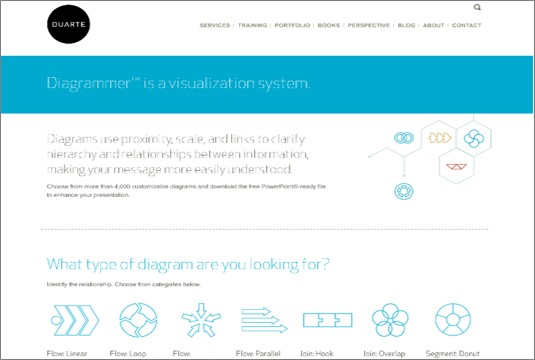


Similarly, Leslie Samuel included a blog calendar download in his SlideShare presentation about how to become a thought leader. His initial e-book includes quick tips like "create consistently" and "create content with a ton of value," while his blog calendar download helps readers put that into practice. He's received over 400,000 views on his 13-slide e-book, proving that effective content does not have to be long!


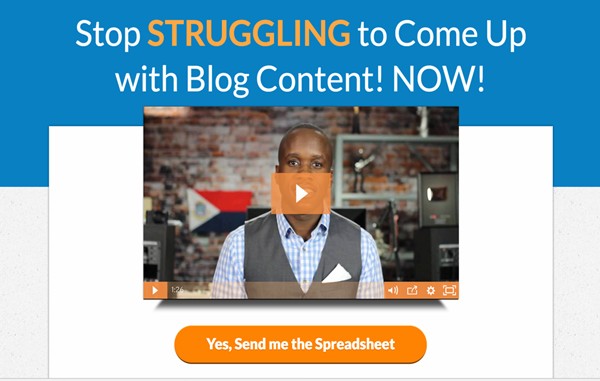
Officevibe also offered multiple pieces of complementary content in its "Job vs. Career" SlideShare. The initial share highlights the differences between short-term jobs and long-term careers, noting that companies should strive to help foster career growth among their employees. The additional guides about onboarding and employee happiness offer tactical advice to help companies implement a "career" mindset.
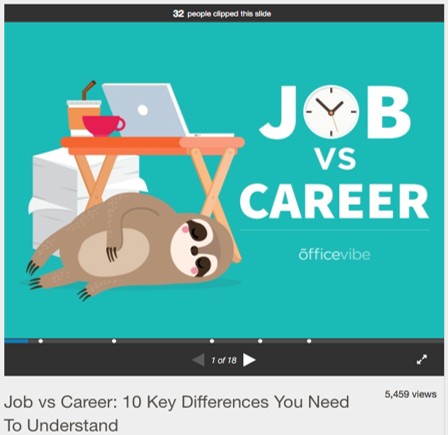
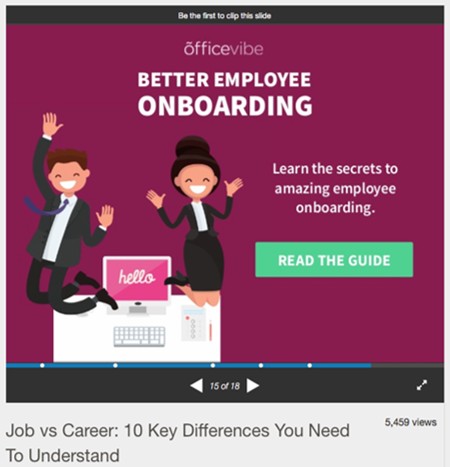
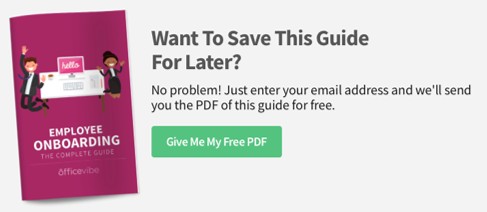


Multi-Part, Cross-Linked Content
If you want to get more mileage out of a piece of content, consider delivering in two or more parts. To promote her book Illuminate and drive leads for her creative agency, Duarte published two e-books on story plots. The "Warning" e-book was shared for free on SlideShare, and linked to the companion "Motivating" e-book behind a gated form on the Duarte website.
This approach generated awareness in the market about a smaller offer, the book, and improved lead quality for creative services by requiring an extra click to access the additional content. By splitting the original piece into multiple parts, Duarte was able to create two assets for the price (or effort) of one.

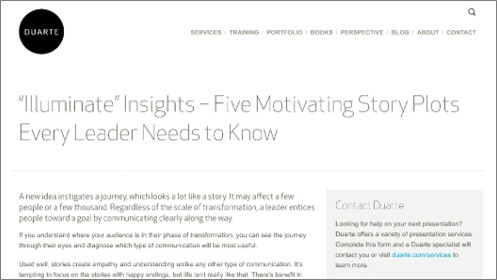
Officevibe also used this strategy by creating short summary e-books on employee recognition and engagement, and including gated links to the complete guide. It was able to create multiple pieces of content across several channels by turning the long-form guides into bite-sized SlideShares.

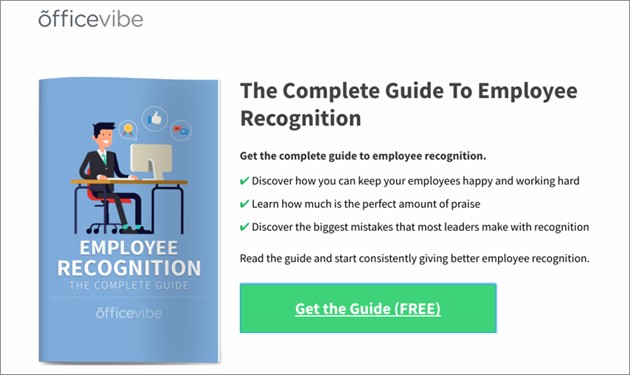
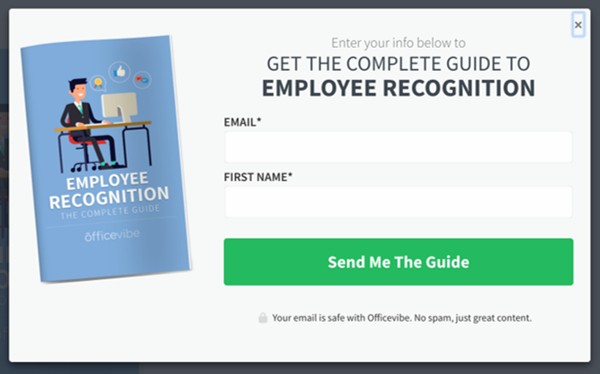
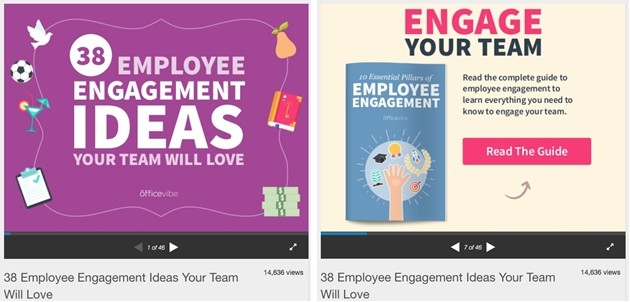
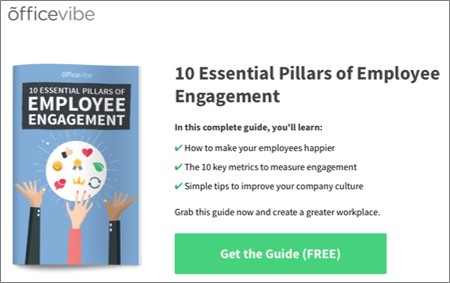

Build Your List With a Tailored CTA
If you're looking to increase your subscriber base or general newsletter list, include a link to sign up in your SlideShare uploads.
Ryan Holiday is an author with nearly 400,000 views on his SlideShare about books that will change your life. He tailored his CTA at the end of the deck to encourage people to sign up to receive his newsletter.

Ana Hoffman of Traffic Generation Cafe used this technique for her SlideShare about Google Reader alternatives. The share has over 19,000 views, and links to her newsletter, which is focused on traffic growth hacks.

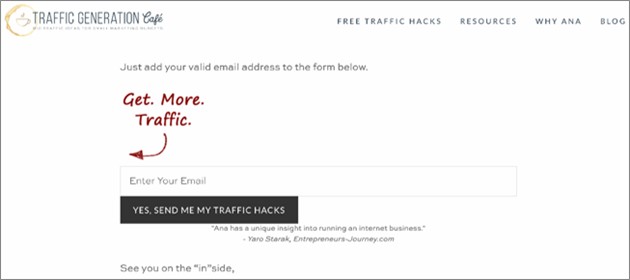
Tips for Building Content
To use SlideShare and e-books for lead-gen, you must incorporate them into the larger content journey:
- Start with the big idea: Take a look at your editorial calendar, current events, or overall strategy to see which topics have enough depth to warrant multiple assets across a variety of touchpoints.
- Categorize the content: Once you have your big idea, brainstorm a list of assets and put them into categories. Here's some examples of assets that might work for two categories:
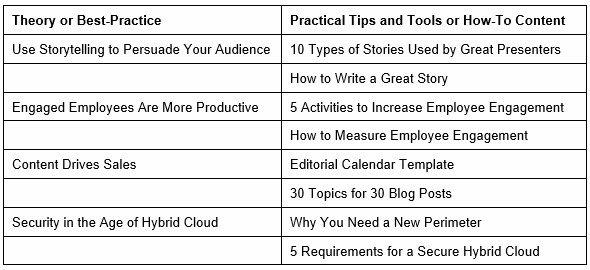
These can be broken down further into asset type and distribution channel, along with links to additional content. Here's a sample content flow with ungated SlideShare e-books, a gated and ungated whitepaper, and an option to contact the company.

- Write the long-form content first: Once you have a list of topics and potential assets, write the longest piece first. Doing will allow you to publish the first piece of content in this journey and help you figure out places to break additional content into a detailed e-book for SlideShare.
- Publish and cross-link detailed content: Once you write the detailed pieces that correspond to your bigger topic and longer asset, publish these pieces and add the links to other areas of the content journey. Add links to blog posts, video descriptions, other e-books, and email nurture campaigns to create a multiple touchpoints and depth of content.
Start Sharing!
SlideShare offers many ways to increase awareness and website traffic, and it can be a great tool for free lead-gen efforts. By pairing complementary content, sharing multipart and cross-linked content, and tailoring CTAs in each deck, marketers can increase lead volume and lead quality with SlideShare.




